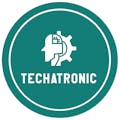Arduino is one of the most popular open-source electronics platforms used for building electronic projects. It’s beginner-friendly, versatile, and backed by a large community. Arduino boards come in different models, each designed for specific use cases. Whether you're a beginner or an experienced developer, choosing the right Arduino board is essential. In this article, we’ll explore the most commonly used Arduino boards: UNO, Mega, Nano, and a few others.
1. Arduino UNO – The Standard BoardArduino UNO is the most widely used board, ideal for beginners and small projects. It uses the ATmega328P microcontroller and has everything needed to get started.
Specifications:
Microcontroller: ATmega328P
- Microcontroller: ATmega328P
Operating Voltage: 5V
- Operating Voltage: 5V
Digital I/O Pins: 14 (6 PWM)
- Digital I/O Pins: 14 (6 PWM)
Analog Input Pins: 6
- Analog Input Pins: 6
Clock Speed: 16 MHz
- Clock Speed: 16 MHz
Flash Memory: 32 KB
- Flash Memory: 32 KB
Best For: Learning Arduino, basic automation, sensor interfacing, small robotics projects.
2. Arduino Mega 2560 – For Bigger ProjectsThe Arduino Mega 2560 is designed for more complex projects requiring multiple I/O pins. It’s commonly used in robotics, 3D printing, and home automation systems.
Specifications:
Microcontroller: ATmega2560
- Microcontroller: ATmega2560
Operating Voltage: 5V
- Operating Voltage: 5V
Digital I/O Pins: 54 (15 PWM)
- Digital I/O Pins: 54 (15 PWM)
Analog Inputs: 16
- Analog Inputs: 16
Flash Memory: 256 KB
- Flash Memory: 256 KB
Clock Speed: 16 MHz
- Clock Speed: 16 MHz
Best For: Advanced robotics, CNC machines, large-scale sensor projects.
3. Arduino Nano – Compact and PowerfulThe Arduino Nano is a small, breadboard-friendly board with the same core features as the UNO. It is ideal for compact projects where space is limited.
Specifications:
Microcontroller: ATmega328P
- Microcontroller: ATmega328P
Operating Voltage: 5V
- Operating Voltage: 5V
Digital I/O Pins: 14
- Digital I/O Pins: 14
Analog Inputs: 8
- Analog Inputs: 8
Clock Speed: 16 MHz
- Clock Speed: 16 MHz
Flash Memory: 32 KB
- Flash Memory: 32 KB
Best For: Portable devices, wearables, compact sensor-based projects.
4. Arduino Micro / Pro Mini – Minimal Size BoardsArduino Pro Mini and Arduino Micro are ultra-small versions used for embedded systems and battery-powered applications. They are often used in wearable tech and small IoT devices.
Pro Mini Highlights:
No USB port (needs FTDI module)
- No USB port (needs FTDI module)
Lower power consumption
- Lower power consumption
Same specs as Nano
- Same specs as Nano
Best For: Low-power applications, embedded systems.
5. Other Popular BoardsArduino Leonardo: Uses ATmega32u4, can act as a keyboard or mouse.
- Arduino Leonardo: Uses ATmega32u4, can act as a keyboard or mouse.
Arduino Due: 32-bit ARM core, runs at 84 MHz, suitable for high-speed applications.
- Arduino Due: 32-bit ARM core, runs at 84 MHz, suitable for high-speed applications.
Arduino MKR Series: Designed for IoT projects with built-in WiFi/Bluetooth/LoRa support.
- Arduino MKR Series: Designed for IoT projects with built-in WiFi/Bluetooth/LoRa support.
Choosing the right Arduino board depends on your project needs. If you're just starting out, the UNO is the best choice. For more advanced and I/O-heavy tasks, go with the Mega 2560. If space is a concern, the Nano or Pro Mini is ideal. Each board has its strengths, and with the rich Arduino ecosystem, there's always one that fits perfectly into your project.





_ztBMuBhMHo.jpg?auto=compress%2Cformat&w=48&h=48&fit=fill&bg=ffffff)






_PnKPri8a6q.jpg?auto=compress%2Cformat&w=48&h=48&fit=fill&bg=ffffff)










_3u05Tpwasz.png?auto=compress%2Cformat&w=40&h=40&fit=fillmax&bg=fff&dpr=2)
Comments